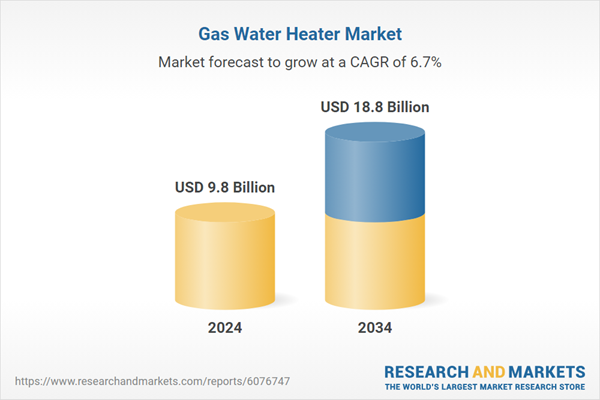Consumers today expect more than just hot water on demand. They want appliances that are smart, responsive, and easy to use. This expectation is reshaping the gas water heater landscape. Systems that offer Wi-Fi connectivity, voice assistance, and remote control features are now leading the charge. Enhanced usability, such as simplified temperature adjustments and real-time diagnostic alerts, is no longer optional- it’s essential. Product development is shifting toward advanced controls, automation, and seamless integration with home ecosystems. As a result, manufacturers are prioritizing innovation to deliver reliable, intuitive systems that enhance everyday living.
The trend toward sustainable construction and smart buildings continues to drive demand for low-emission, high-performance gas water heaters. These products align with both environmental regulations and modern consumer preferences. The widespread availability of natural gas infrastructure further supports market expansion, especially in regions where natural gas remains more cost-effective than electricity. In areas with frequent power disruptions, gas water heaters serve as a dependable source of hot water, reinforcing their market relevance.
By product, the market is segmented into instant and storage water heaters. Instant gas water heaters are rapidly gaining traction, with the segment expected to generate USD 6 billion by 2034. Consumers are drawn to their space-saving design, faster heating, and energy-saving capabilities. Flexible capacity options and affordable pricing further boost their popularity. Green infrastructure projects- both new builds and retrofits- are accelerating adoption, especially in residential developments aiming for energy-efficient certifications.
The residential segment accounted for a dominant 74.9% share in 2024, with more homeowners opting for gas water heaters due to their energy savings, lower heating costs, and consistent performance. The rise of zero-emission housing developments is reinforcing this shift. Features like leak detection, smart monitoring, touchscreens, and voice-activated controls make these systems even more attractive.
North America held a 25% share, with the U.S. generating USD 1.9 billion in 2024. Growing environmental awareness and tighter energy regulations are pushing manufacturers to innovate with low-emission materials and smart automation. Leading players such as Noritz Corporation, Bosch Thermotechnology Corp., Haier Inc., and A. O. Smith are investing heavily in R&D to introduce Wi-Fi-enabled, app-controlled, and voice-activated models. These advancements are setting new benchmarks in energy efficiency and user experience.
Comprehensive Market Analysis and Forecast
- Industry trends, key growth drivers, challenges, future opportunities, and regulatory landscape
- Competitive landscape with Porter’s Five Forces and PESTEL analysis
- Market size, segmentation, and regional forecasts
- In-depth company profiles, business strategies, financial insights, and SWOT analysis
This product will be delivered within 2-4 business days.
Table of Contents
Companies Mentioned
The companies featured in this Gas Water Heater market report include:- American Water Heater
- Ariston Thermo
- A. O. Smith
- BDR Thermea Group
- Bosch Thermotechnology Corp.
- Bradford White Corporation
- FERROLI S.p.A
- Hubbell Heaters
- Havells India Ltd.
- Haier Inc.
- Lennox International Inc.
- Noritz Corporation
- Parker Boiler Company
- Rheem Manufacturing Company
- Rinnai America Corporation
- State Industries
- Vaillant
- Westinghouse Electric Corporation
Table Information
| Report Attribute | Details |
|---|---|
| No. of Pages | 80 |
| Published | April 2025 |
| Forecast Period | 2024 - 2034 |
| Estimated Market Value ( USD | $ 9.8 Billion |
| Forecasted Market Value ( USD | $ 18.8 Billion |
| Compound Annual Growth Rate | 6.7% |
| Regions Covered | Global |
| No. of Companies Mentioned | 19 |









